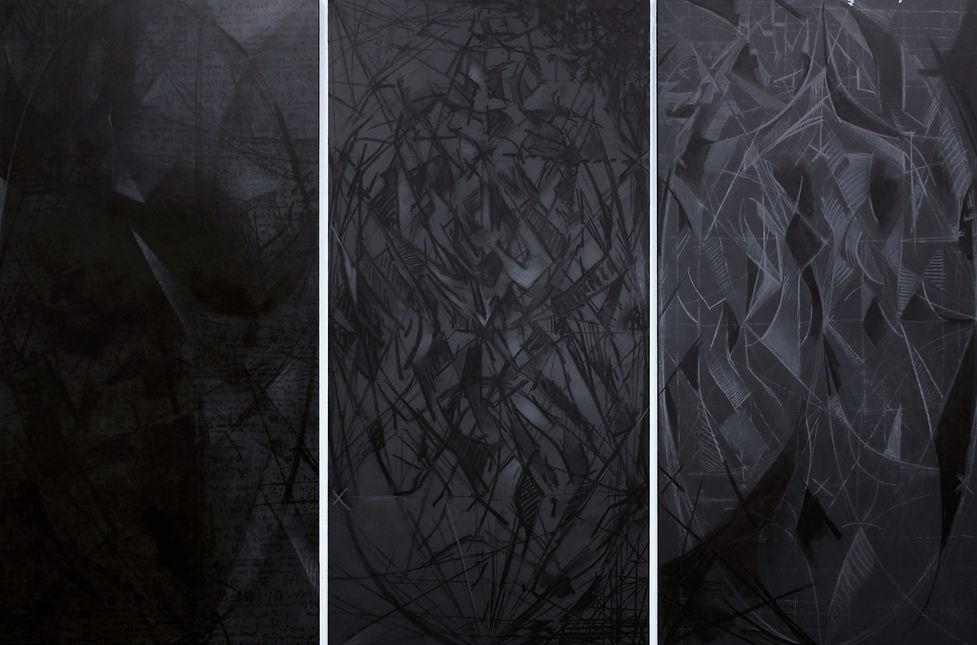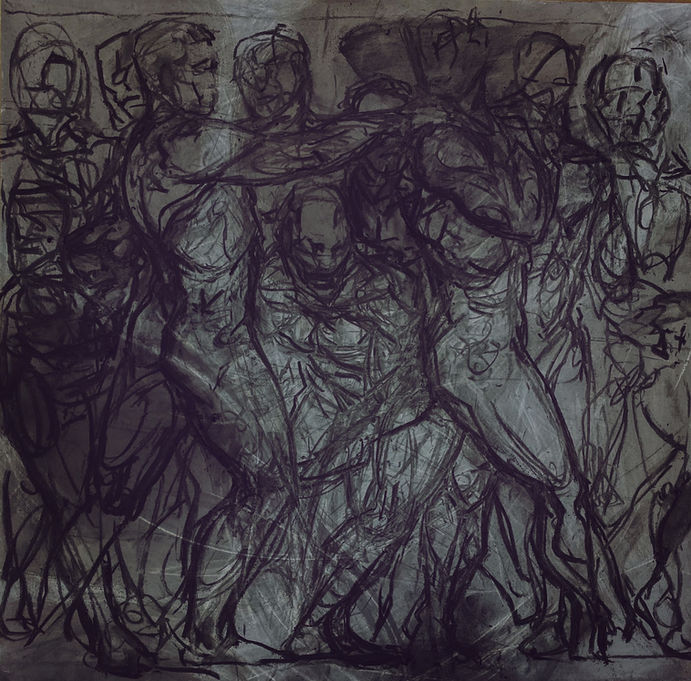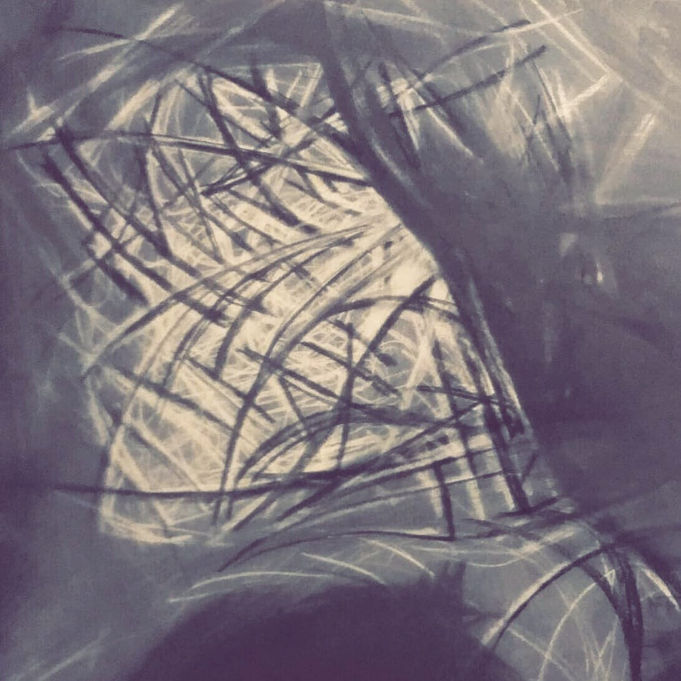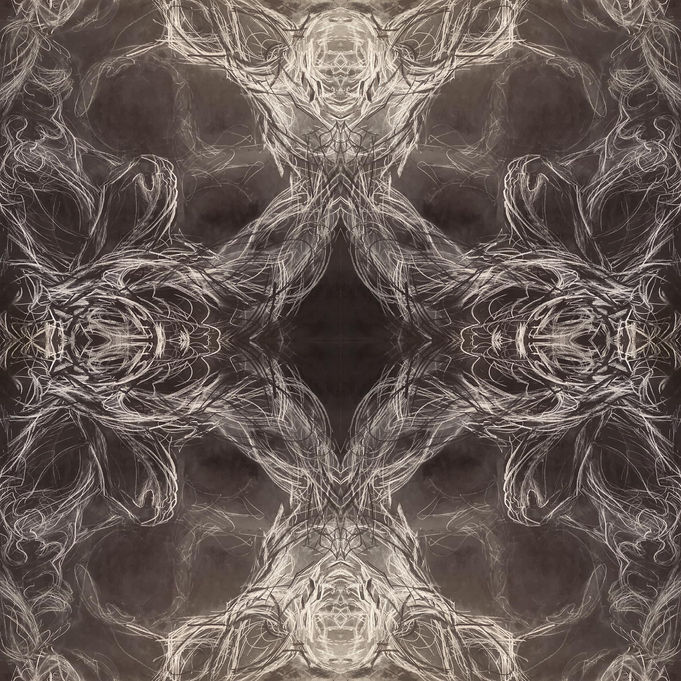RECENT ARTWORK:
THE NULL SERIES
The pictures and information below explore concepts and approaches used in the development of my most recent large-scale series, The Null Series.
A gallery of the key pieces in the series is included at the bottom of this page.
The Null Series explores the psychological theme of self-congruence and the physical concept of material resonant frequency. The arrangement of repetitive, expressive, and architectural mark-making are intended to mirror patterns created by Chladni Plates, used in the study of cymatics (an application of modal vibrational phenomena). The patterns are intended to represent a kind of “standing wave” of human experience: the tension between one’s flesh and one’s self-concept; the arrow of time and chaotic iteration; a personal geometry and a universally human calculus of variation.
This series represents an attempt to draw connections between the physical concept of material resonance and the psychological theme of self-congruence. One method of expressing this connection used patterns formed by Chladni Plates as the compositional basis of the work. Two examples of this approach can be seen below.




The numbers 1210 and 2020 are two members of a set of integers called self-descriptive numbers.
Self-descriptive numbers are positive integers that are g digits long when given in a base of the same value, where any singular digit within the number reflects the times that digit's in-base place-value occurs within the number. For example, in base 4, the self-descriptive number must have 4 digits. Let's express this 4-digit number as ABCD. The value of the digit at A must correspond to the instances of "0" that occur within the digits of ABCD. Similarly, the value of the digit at B must correspond to the instances of "1" that occur in ABCD, and so on. The number 1210 is self-descriptive in base 4 because it is exactly 4 digits long and:
- there is exactly 1 "0" in 1210;
- there are exactly 2 "1"s in 1210;
- there is exactly 1 "2" in 1210;
- there are exactly 0 "3"s in 1210.
A similar treatment for 2020 follows.
Self-descriptive numbers were chosen for use in this project due to their autobiographical nature. In an existential sense, humans are also highly autobiographical. We construct perceptions of our past and future selves through reflection and projection of our present self-image.
Self-congruency, most generally, is the degree to which any one of these self-images (past, present, or future) coincides with who we were, who we are, and whom we hope to be in the future. We feel disconnected from ourselves when we sense that these self-images are not in sufficient alignment with either interior (other self-images, etc.) or exterior (other's perception of you, personal circumstance or position, etc.) factors. This process occurs for us in a psychologically complex, interwoven, and interdependent manner.
The large triptych included in the series (pictured below) aims to illustrate this interdependent reflection/projection process. The triptych consists of three abstracted figures: past (left panel), present (center panel), and future (right panel) selves. Because the subject of this series is centered between the themes of material and description...flesh and shadows..., the triptych echoes the imagery of oval mirrors, glass, shadows, screens, and the iterated gestures of bodies.

The Chladni plate pattern (left) and the resulting work (right), resulting from a resonance frequency of 2020 Hz.
The Chladni plate pattern (left) and the resulting work (right), resulting from a resonance frequency of 1210 Hz.
Naturally, a strong sense of inner tension may develop and grow during this reflective/projective process, which is running at a low rumble, continuously in the background of our inner lives. A similar, more physical notion of inner tension plays a part in determining a given material's vibrational modes and patterns. So, these two themes, of inner psychological tension and structural tension, run throughout the series in both composition and subject matter (see below for examples from the series).
Lastly, with respect to the technical process, many drawings in this series were intended to expand upon the architectural and expressive mark-making characteristic of Dennis Creffield's cathedral drawings (e.g., Canterbury Cathedral, 1987).
SERIES GALLERY













